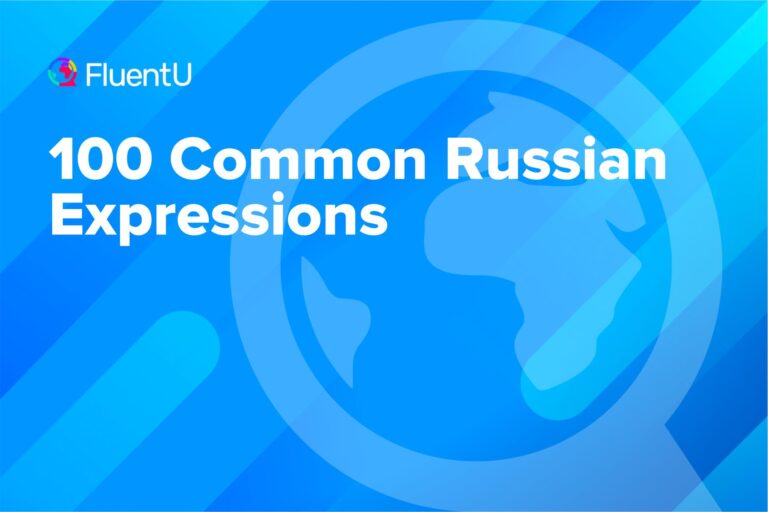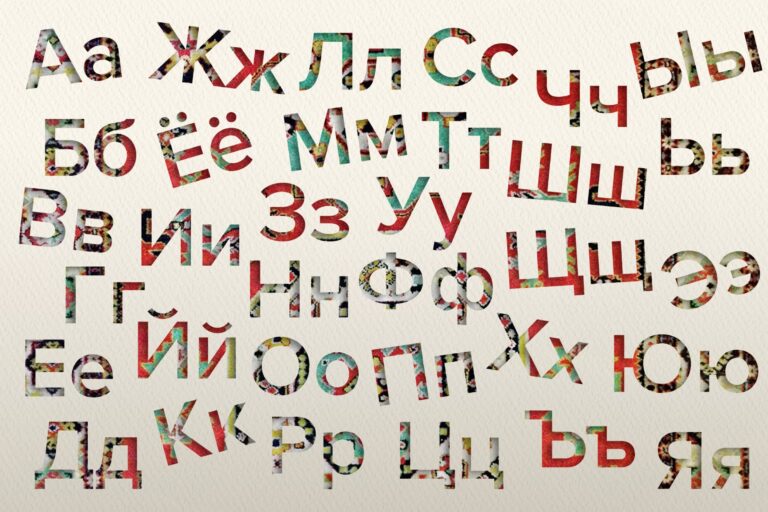Contents
- 1. Hello (formal) — Здравствуйте
- 2. Hello (informal) — Здравствуй
- 3. Hello (informal, shortened) — Здрасьте
- 4. Hello (on the phone) — Aлло
- 5. Hi — Привет
- 6. Hiya, howdy — Приветик
- 7. Greetings — Приветствую
- 8. Hi — хай , Хаюшки
- 9. Hey — Эй , Yo — Йо
- 10. Hey, yo — Здорово
- 11. Good morning — Доброе утро
- 12. Good day — Добрый день
- 13. Good evening — Добрый вечер
- 14. Good night — Доброй ночи
- 15. Welcome — Добро пожаловать
- 16. Welcome (after travel) — С приездом
- 17. Welcome (after a flight) — С прилётом
- 18. I’m happy to see you — Рад тебя видеть
- 19. Oh, what people! — О, какие люди!
- 20. Long time no see! — Сколько лет, сколько зим!
- 21. Hello, Comrade — Здравствуйте, товарищ
- 22. Hello! (online) — Здрасти
- 23. Hello — Салют
- Why Learn a Variety of Russian Greetings?
- And One More Thing...
23 Ways to Say “Hello” in Russian
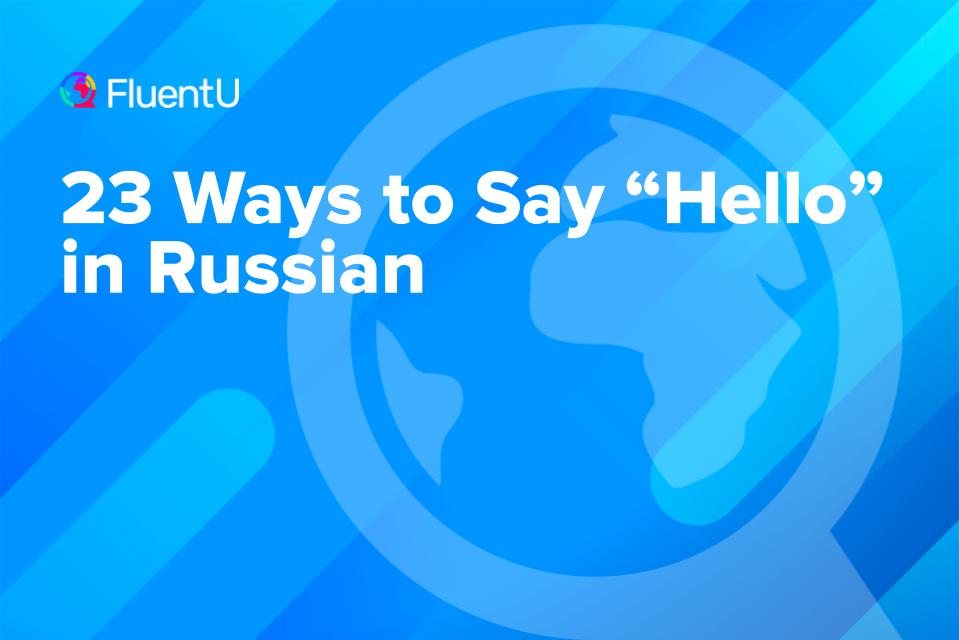
You might already know how to say “Hello” in Russian.
But can you say “Hi” in Russian to a group of friends without sounding stuffy? Do you know which greeting to use with a friend and which to use with your boss? Can you sound young and hip by using slang?
With good etiquette, some cultural know-how and the perfect greeting from the list below, you’ll be well on your way to starting off any Russian conversation in grand style.
Download: This blog post is available as a convenient and portable PDF that you can take anywhere. Click here to get a copy. (Download)
1. Hello (formal) — Здравствуйте
Usage: Formal
The workhorse of Russian greetings, здравствуйте is the most common way to say hello. It may be a mouthful, but is definitely worth taking the time to learn.
Здравствуйте is often used in the most formal situations, and is used when addressing someone you don’t know, someone you respect, or in a professional setting. It can also be shortened to “здравствуй” (zdravstvuy) in informal settings.
Additionally, if you’re speaking to a group, здравствуйте is also the preferred choice, since the verb form is meant to be used either in formal situations or when you’re speaking to more than one person.
2. Hello (informal) — Здравствуй
Usage: Informal
Здравствуй, on the other hand, is the informal version of the same word, which you can use with friends or with children. However, when in doubt about the level of formality, always go with the formal здравствуйте.
Interestingly enough, здравствуйте and здравствуй actually come from the verb здравствовать , which means “to be healthy” or “to live long.” Now that’s a warm welcome!
3. Hello (informal, shortened) — Здрасьте
Usage: Informal
If здравствуйте is too much of a mouthful, you can also shorten it to здрасьте as long as the situation isn’t too formal.
The level of formality might be for people who are a similar age or status as you, but you don’t know them extremely well, like the cashier at the store.
Note that this greeting is never used in writing!
4. Hello (on the phone) — Aлло
Usage: On the phone
Алло is also used to mean “hello.” However, this is most often used when answering the phone, and not often used in other contexts.
Luckily for English speakers, this is a very easy Russian word to learn to remember and pronounce, because it sounds somewhat similar to English “hello.”
5. Hi — Привет
Usage: Informal
Привет is the most common informal greeting. It’s used like the English word “hi.” Since it’s easy and common, you may find yourself using this one quite often with friends and peers.
You can see the word written down in Russian cursive in the featured image at the top of this post!
6. Hiya, howdy — Приветик
Usage: Informal, mostly for female speakers
Приветик is the diminutive of привет, so it’s an even less formal way of saying “hi.”
You might think of it as “hiya” or “howdy.” It’s most often used by women, so it may come across as feminine. That being said, it usually comes across as particularly sweet.
7. Greetings — Приветствую
Usage: Informal as a standalone phrase mostly for young male speakers, formal when used in a sentence
Literally meaning “I greet you,” this is a greeting that comes from the verb приветствовать (to greet). It’s a moderately formal phrase used among males of all ages.
It may be used, for example, when addressing business partners or when the level of formality is somewhat ambiguous because it does work with both formal and informal “you,” unlike other options. So if you want to punt the pronoun choice onto the other side, this is one way to do it.
However, Приветствую can also be used as a formal greeting or welcome. In this case, it’s used in a full sentence, as in Я приветствую вас , which means “I welcome you.”
8. Hi — хай , Хаюшки
Usage: Informal, anglicized, with young people
Хаюшки is the diminutive take or cuter version of хай.
If you hang out with young, hip Russians, you may hear some greetings that sound deceptively familiar. That’s because they’re Anglicisms, meaning they were derived from common English-language greetings.
9. Hey — Эй , Yo — Йо
Usage: Informal, anglicized
If you like a good Anglicism, you may even encounter a few more. Эй (hey) and йо (yo) are also pronounced quite similarly to their American counterparts. You might also hear алоха (aloha).
These greetings are less common in everyday use, so you’ll only hear them if you’re hanging out in the right crowd (generally younger and close friends).
10. Hey, yo — Здорово
Usage: Informal, mostly for male or young speakers
Здорово is an informal greeting that can be used like “hey” or “yo.” If Приветик is used more for women, then this one would also be more commonly used more men or young people in general. It can also be translated as “cool” or “awesome.”
It’s important to pay attention to context and the accent, though. When the stress is on the second о, this is a greeting.
When the stress is on the first о, it can also mean “wow” or “well done,” so always pay attention to stress and context. It could certainly be awkward if you use the wrong word!
This phrase can be made even more informal by reducing it to дароф , which is slang used by close male friends and mostly for verbal communication.
11. Good morning — Доброе утро
Usage: Informal (when you’ve just woken up), formal (when referring to morning hours)
Доброе утро means “good morning” and can be used as a formal greeting. Not too surprisingly, you should try to restrict your use of this greeting to morning hours.
Since it literally means “good morning,” you can also use it with friends and family when you’ve just woken up as well.
12. Good day — Добрый день
Usage: Formal
Добрый день is a formal greeting that means “good day.” This can be used late morning through the afternoon. It’s the greeting you should use when you enter a shop or say hello to someone working in the post office, grocery store or bank.
13. Good evening — Добрый вечер
Usage: Formal
Добрый вечер is a formal greeting that means “good evening.” It’s used during evening hours but once the evening progresses into night, say around 10 p.m., you’ll want to use the next greeting on our list.
14. Good night — Доброй ночи
Usage: Formal, used as a greeting
Доброй ночи is a formal phrase literally meaning “good night” but not the before-going-to-bed kind.
You can use it as a greeting at night or in the early morning while it’s still dark out. You can also use it as a farewell. It’s not as common as the greetings previously, though, so keep that in mind.
15. Welcome — Добро пожаловать
Usage: General
Добро пожаловать means “welcome.” It can be used formally or informally, just like the English word “welcome.” You’ll use this to welcome someone to your house or a party, for example, or even to a restaurant, say, if you’re hosting a birthday party there.
16. Welcome (after travel) — С приездом
Usage: After travel
С приездом is another form of “welcome” that you might use when someone is arriving after a long journey or travel.
The meaning is that you’re literally congratulating someone for their arrival, so it indicates that you’re happy to see them. This would be especially useful if a friend or family member is returning from a longer trip.
17. Welcome (after a flight) — С прилётом
Usage: After a flight
The equivalent of someone arriving after travel, but specifically after a flight would be С прилётом.
The word прилёт means arrival by air and might be a good one to use when meeting someone at the airport.
18. I’m happy to see you — Рад тебя видеть
Usage: Male speaker, informal
This phrase offers a lot of options. The basic gist is “nice to see you.” However, variations are used to indicate your gender and to change the level of formality.
Men would use рад, while women would say рада. If the situation is formal, you’d use вас, but you can also use тебя in informal situations. Here are the three other variations of this phrase:
- If you’re male in a formal situation: Рад вас видеть
- If you’re female in a formal situation: Рада вас видеть
- If you’re female in an informal situation: Рада тебя видеть
19. Oh, what people! — О, какие люди!
Usage: Informal
This one doesn’t have a direct equivalent in English and literally means “Oh, what people!”
It’s an enthusiastic way of showing how happy you are once you’ve accidentally run into someone you weren’t expecting to see. It also serves as an informal “Long time no see!”
20. Long time no see! — Сколько лет, сколько зим!
Usage: Informal
Another one to indicate how happy you are to see someone, Сколько лет, сколько зим! is a bit more of a theatrical declaration to indicate just how long you haven’t seen someone.
It literally means “How many years, how many winters!” but can also be translated as “How many summers, how many winters!” playing on the double meaning of the word “лет.” It’s a much more poetic way of saying “Long time no see.”
21. Hello, Comrade — Здравствуйте, товарищ
Usage: Nostalgic Soviet term often used as a throwback or joke
Здравствуйте, товарищ is a formal way of saying “hello, comrade” in Russian and it was commonly used during the Soviet era.
It’s not commonly used today, except in certain nostalgic or ironic contexts. If you say it, chances are the person on the receiving end will take it as a joke. Be careful with this phrase, though, because there’s a chance that an older person could find your use of it offensive.
22. Hello! (online) — Здрасти
Usage: With friends and acquaintances, usually online
Здрасти is a very casual and quite informal way of saying “hello” in Russian, and is most often used among friends or acquaintances.
It’s important to note that it’s not considered a proper word in Russian, and some people may consider it rude or uneducated because of this. It’s usually spelled this way only online, and mainly used by younger people.
23. Hello — Салют
Usage: When entering a room or meeting someone
Салют is a casual and informal way to say “hello” in Russian that can be used among friends and in informal settings.
It can also be used as a general greeting when entering a room or meeting someone for the first time, such as a on blind date or at a friend’s party.
Why Learn a Variety of Russian Greetings?
Still not convinced why you need so many Russian greetings? Here are a few reasons for learning them:
- Learning a variety of Russian greetings will equip you to start off any conversation on the right foot. If you learn a variety of greetings, you’ll have the right phrase whether you’re ordering food, answering the phone, welcoming a family member, greeting a friend or entering into a very important business negotiation.
- Knowing a variety of Russian greetings will make you seem more knowledgeable. Plenty of tourists will have studied a few greetings, but few know a wide array, so having this information will set you apart from the pack. All it takes is a little extra time and effort.
- Russian greetings are easy to incorporate into your everyday vocabulary. Since they’re so commonly used, they’re much easier than lots of other phrases to learn fast and start using immediately. This way you can use your Russian skills more often and spread your love of the Russian language to those around you!
If you’d like to see Russian greetings in context, FluentU is a language learning program that uses video content to teach Russian words and a variety of other everyday speech.
FluentU takes authentic videos—like music videos, movie trailers, news and inspiring talks—and turns them into personalized language learning lessons.
You can try FluentU for free for 2 weeks. Check out the website or download the iOS app or Android app.
P.S. Click here to take advantage of our current sale! (Expires at the end of this month.)
So there you have it! With these 23 greetings, you’ll always have the perfect way to start a conversation in Russian, no matter the situation.
Now go out there and impress your Russian-speaking friends. And when you’re done mastering how to say “hello,” you can move on to saying “goodbye” in Russian!
Download: This blog post is available as a convenient and portable PDF that you can take anywhere. Click here to get a copy. (Download)
And One More Thing...
If you love learning Russian and want to immerse yourself with authentic materials from Russia, then I should also tell you more about FluentU.
FluentU naturally and gradually eases you into learning the Russian language and culture. You'll learn real Russian as it's spoken by real Russian people!
FluentU has a very broad range of contemporary videos. Just a quick look will give you an idea of the variety of Russian-language content available on FluentU:
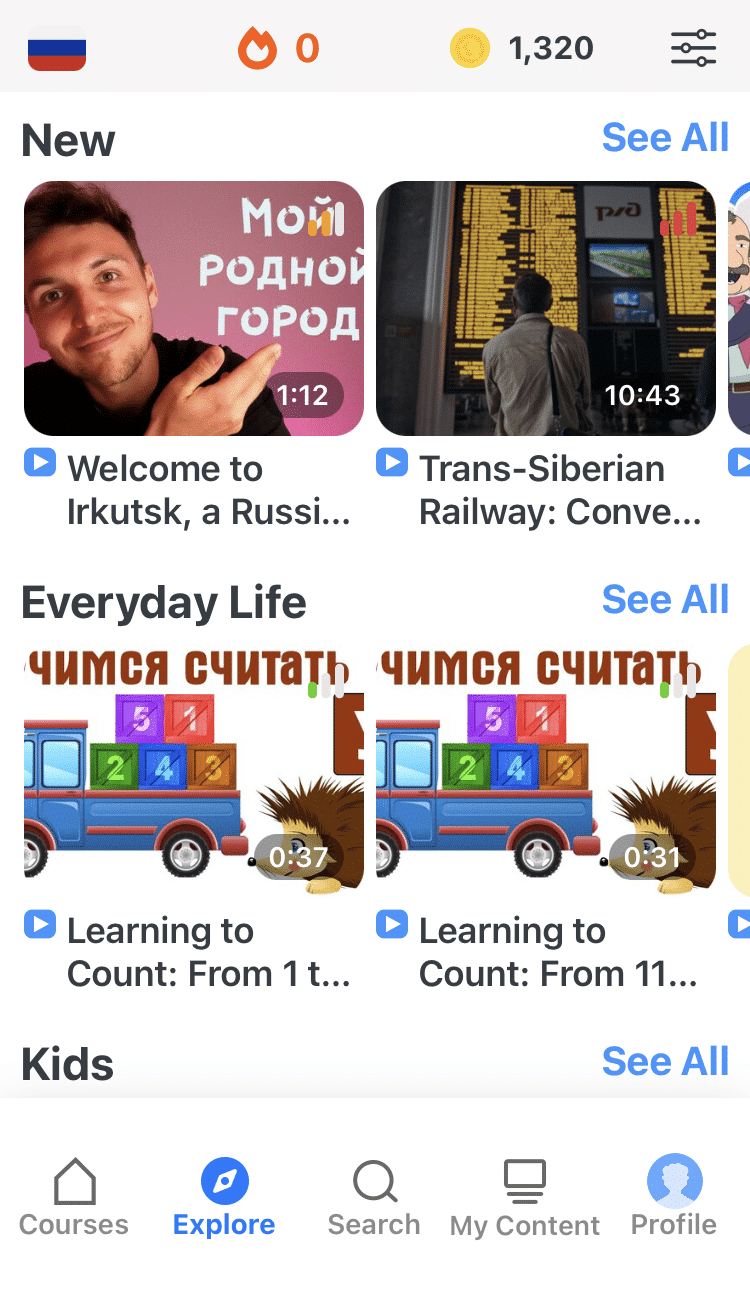
FluentU makes these native Russian videos approachable through interactive transcripts. Tap on any word to look it up instantly.
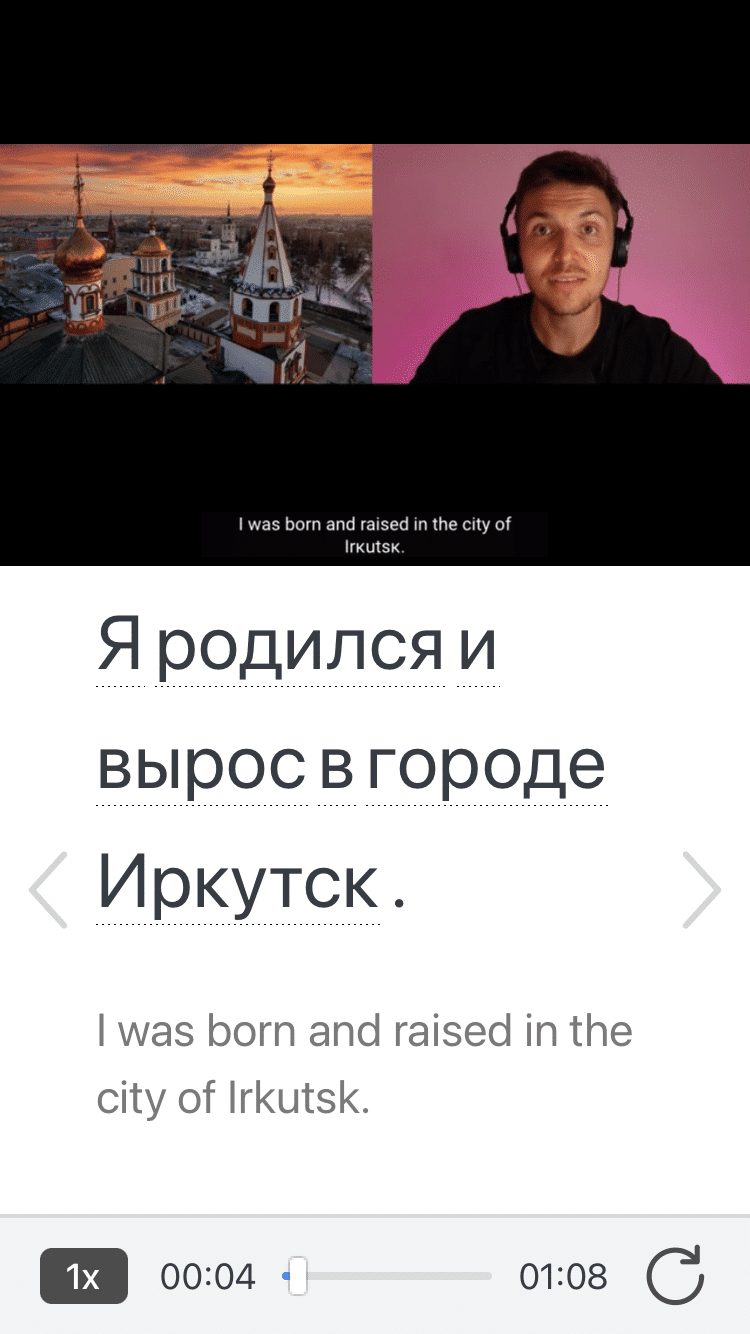
Access a complete interactive transcript of every video under the Dialogue tab. Easily review words and phrases with audio under Vocab.
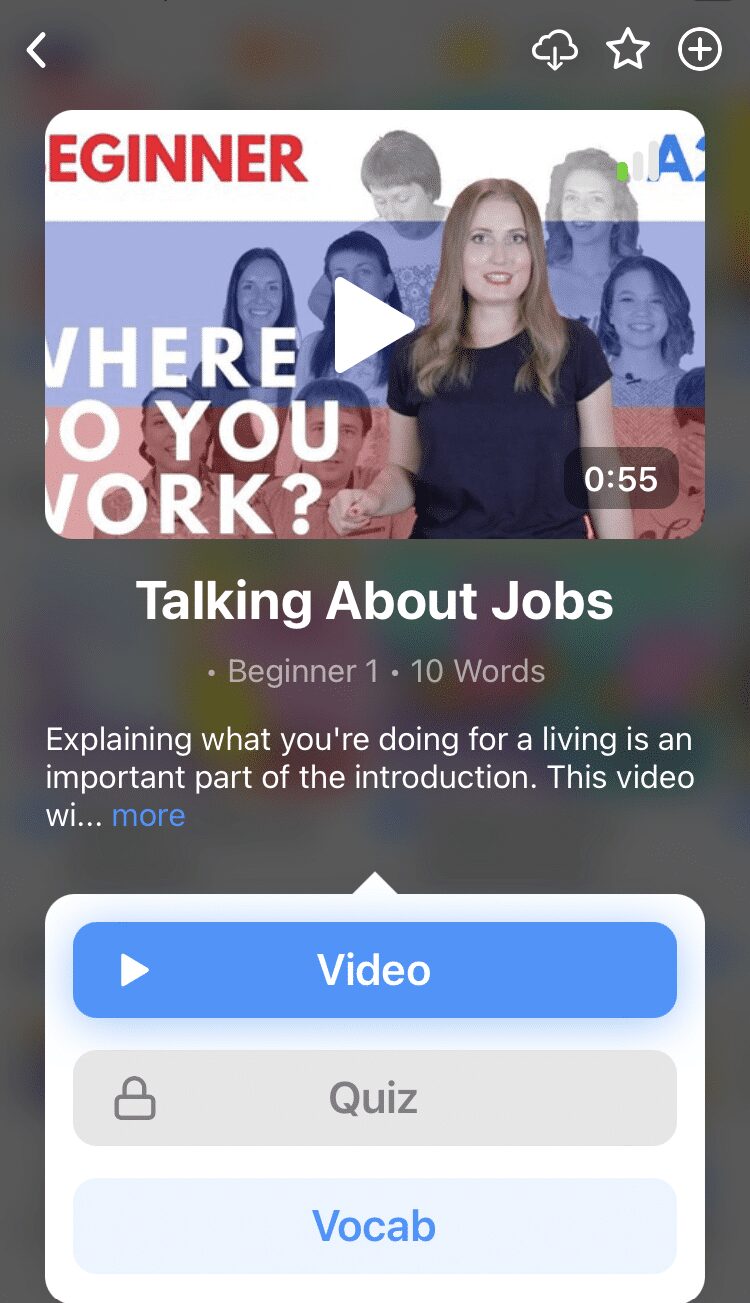
All definitions have multiple examples, and they're written for Russian learners like you. Tap to add words you'd like to review to a vocab list.
And FluentU has a learn mode which turns every video into a language learning lesson. You can always swipe left or right to see more examples.
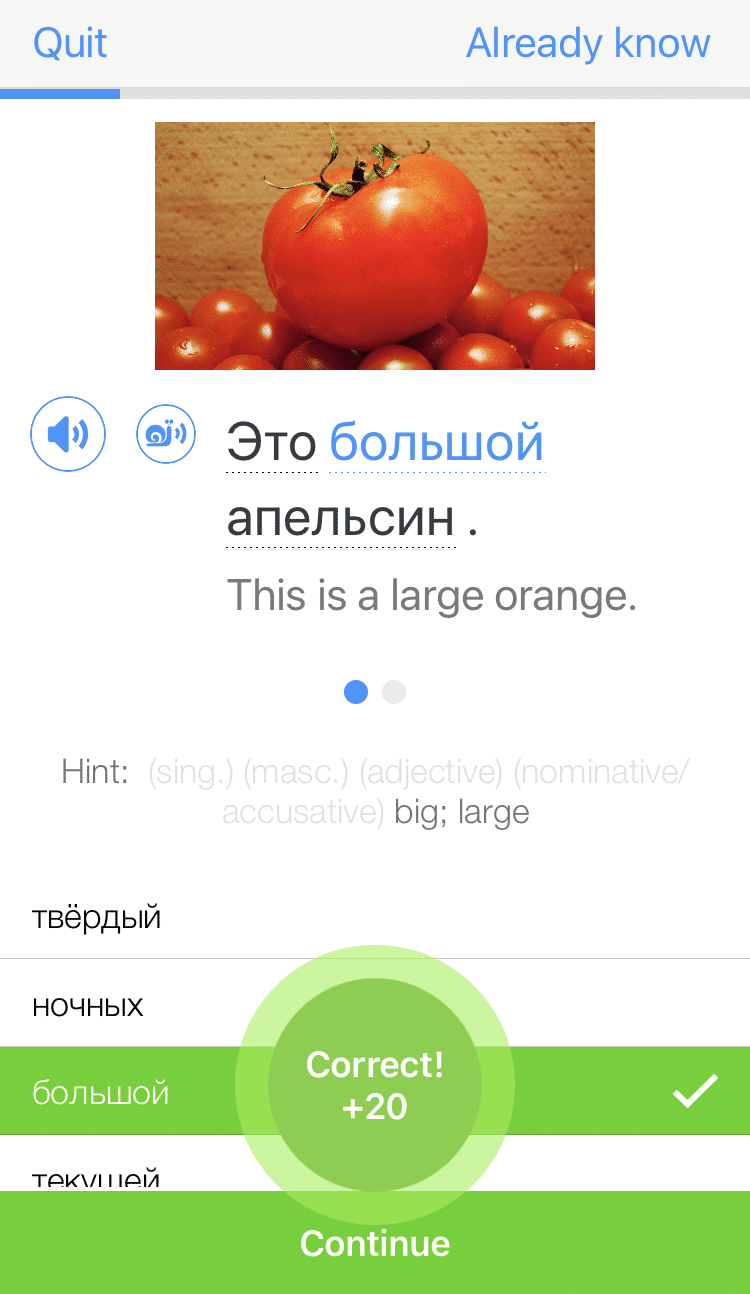
The best part? FluentU keeps track of your vocabulary, and gives you extra practice with difficult words. It'll even remind you when it’s time to review what you’ve learned. You'll have a 100% personalized experience.
Start using the FluentU website on your computer or tablet or, better yet, download the FluentU app from the iTunes or Google Play store. Click here to take advantage of our current sale! (Expires at the end of this month.)


